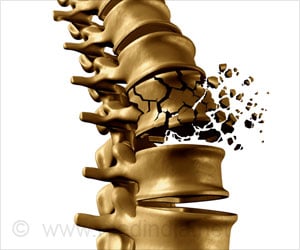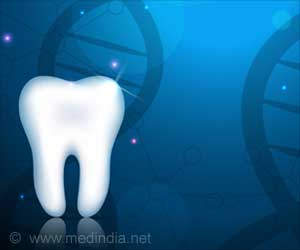World Osteoporosis Day is celebrated on 20th October every year. It aims to create global awareness about osteoporosis and the importance of taking preventive measures to reduce the chances of bone fractures.
- World Osteoporosis Day is celebrated on 20th October every year
- Its main objective is to raise awareness about osteoporosis worldwide
- This campaign could substantially reduce the global burden of osteoporosis
This year also marks the launch of the 2nd edition of the IOF Compendium of Osteoporosis, a key policy document that highlights the regional and global burden of osteoporosis and suggests ways to prevent it.
Read More..
Objectives of World Osteoporosis Day
- Increase understanding about the relation between osteoporosis and bone fractures
- Highlight the human and socio-economic impact of fractures through patient’s real-life stories
- Encourage the public to get health check-ups to identify risk factors and predisposition to osteoporosis
History of World Osteoporosis Day
World Osteoporosis Day was established on 20th October 1996 by the National Osteoporosis Society, UK, with support from the European Union. The International Osteoporosis Foundation (IOF) took charge of organizing the event from 1997. The World Health Organization (WHO) co-sponsored the celebrations in 1998 and 1999. From 1999 onwards, the IOF decided that World Osteoporosis Day should have a specific theme. The first such theme focused on ‘Early Detection’.Focus on ‘Emotional Aspects’: 2019 Osteoporosis Day Theme
The 2019 World Osteoporosis Day campaign will have the tagline ‘That’s Osteoporosis’ and will showcase the emotional aspects of living with the disease through impactful visuals and real-life stories of patients from around the world. The campaign will highlight the life-changing impact of osteoporosis on sufferers with respect to pain, disability, loss of independence, and inability to carry out everyday tasks.Osteoporosis and its Complications
Osteoporosis is so called because bones (osteum) start to become porous (porosis), which makes them weak and fragile so that they break easily. Osteoporosis is a growing global health problem that respects no country boundaries. It is a silent, underlying cause of painful, debilitating and life-threatening fractures.The condition is ‘invisible’ with no obvious signs or symptoms – until bones start breaking. Osteoporotic fractures can occur from minor falls, bumps, bending, lifting, sudden movements, and even sneezing. Common sites of fracture are the hip, spine, wrist and upper arm. The major driver of osteoporosis is a rapid rise in the aging population.
Osteoporosis: Facts & Figures
- 1 fracture occurs every 3 seconds
- Suffering a single fracture doubles the risk for another
- Global incidence of hip fractures will increase by 310 percent in men and 240 percent in women by 2050
- Following a hip fracture, 60 percent of patients require short-term assistance and 20 percent require long-term assistance
- Hospitalization due to osteoporosis is longer than breast cancer, diabetes and heart attack
- Osteoporotic fractures affect 1 in 3 women and 1 in 5 men aged above 50 years
- 1 in 5 women with a spinal fracture will suffer another fracture within 1 year
- Risk of fracture in men is 27 percent higher than prostate cancer
- Only 10 percent of older women with fractures receive treatment for osteoporosis
- 80 percent of osteoporotic fractures remain undiagnosed and untreated
Ways to Generate Awareness on World Osteoporosis Day
There are numerous ways to generate awareness on World Osteoporosis Day, some of which are briefly highlighted below:- Popular Talks: These are highly effective ways of communicating with the general public. These talks help lay people to better understand the disease and the need for early detection and treatment
- Free Health Check-Ups: Osteoporosis risk assessment can be carried out in these health camps, which provide an ideal opportunity for people to interact with leading medical specialists to gain essential and reliable information about the disease
- Information Dissemination: Osteoporosis related information can be disseminated by distributing pamphlets at prominent public places. Posters and banners on osteoporosis can also be displayed in schools, colleges, and hospitals to create awareness among students, patients and their families
- Social Media Campaigns: Mass awareness campaigns can be launched using social media, especially among the new generation. Infographics, patient’s stories, photos, and videos on the topic of osteoporosis can be shared on social media platforms such as Facebook, Twitter, Instagram, YouTube, and LinkedIn, using the hashtag #WorldOsteoporosisDay
- Media Coverage: Media coverage of events on World Osteoporosis Day is vital for generating awareness about the disease. In this regard, press conferences can be held to sensitize the media. Moreover, newspaper feature articles on osteoporosis by eminent physicians and talk shows with celebrities on TV or radio are also extremely effective in spreading the message among the general public
Health Tips for Preventing Osteoporosis
- Exercise: Regular exercise is very important for keeping bones strong and healthy. The most appropriate and recommended exercises include weight-bearing, muscle-strengthening and balance-training exercises
- Diet: A diet enriched with bone-healthy nutrients is important for preventing osteoporosis. The most important nutrients for maintaining optimal bone health are calcium, proteins and vitamin D. Calcium can be obtained from milk, while proteins are abundant in soy products, meat, fish and poultry. Vitamin D is synthesized in the body in adequate amounts by exposure to sunshine
- Lifestyle: Adopting a healthy and active lifestyle helps in keeping the bones and joints in pristine condition. It is very important to maintain healthy body weight, and avoid negative lifestyle habits, such as smoking and excessive alcohol consumption
- Health-Seeking Behavior: Regular health check-ups are important for the detection of early warning signs so that adequate preventive measures can be taken. A history of recurrent fractures or specific diseases and medications that affect bone density are early predictors of osteoporosis in old age
- Preventive Therapy: In case of early warning signs of osteoporosis such as a propensity for fractures, preventive treatment should be sought to protect and strengthen the bones by taking medications and nutritional supplements
Conclusion
What better way to conclude than through the words of Professor Cyrus Cooper, President of IOF, who says: “World Osteoporosis Day is a key date in the bone field. It’s an occasion when people around the globe unite to put the spotlight on the immense global burden caused by osteoporosis.”References:
- World Osteoporosis Day: October 20 - (http://worldosteoporosisday.org/)
- World Osteoporosis Day 2019 - (https://ncdalliance.org/news-events/event/world-osteoporosis-day-2019)
- World Osteoporosis Day: Resources - (http://worldosteoporosisday.org/resources)
- World Osteoporosis Day - (https://en.wikipedia.org/wiki/World_Osteoporosis_Day)
Source-Medindia
















